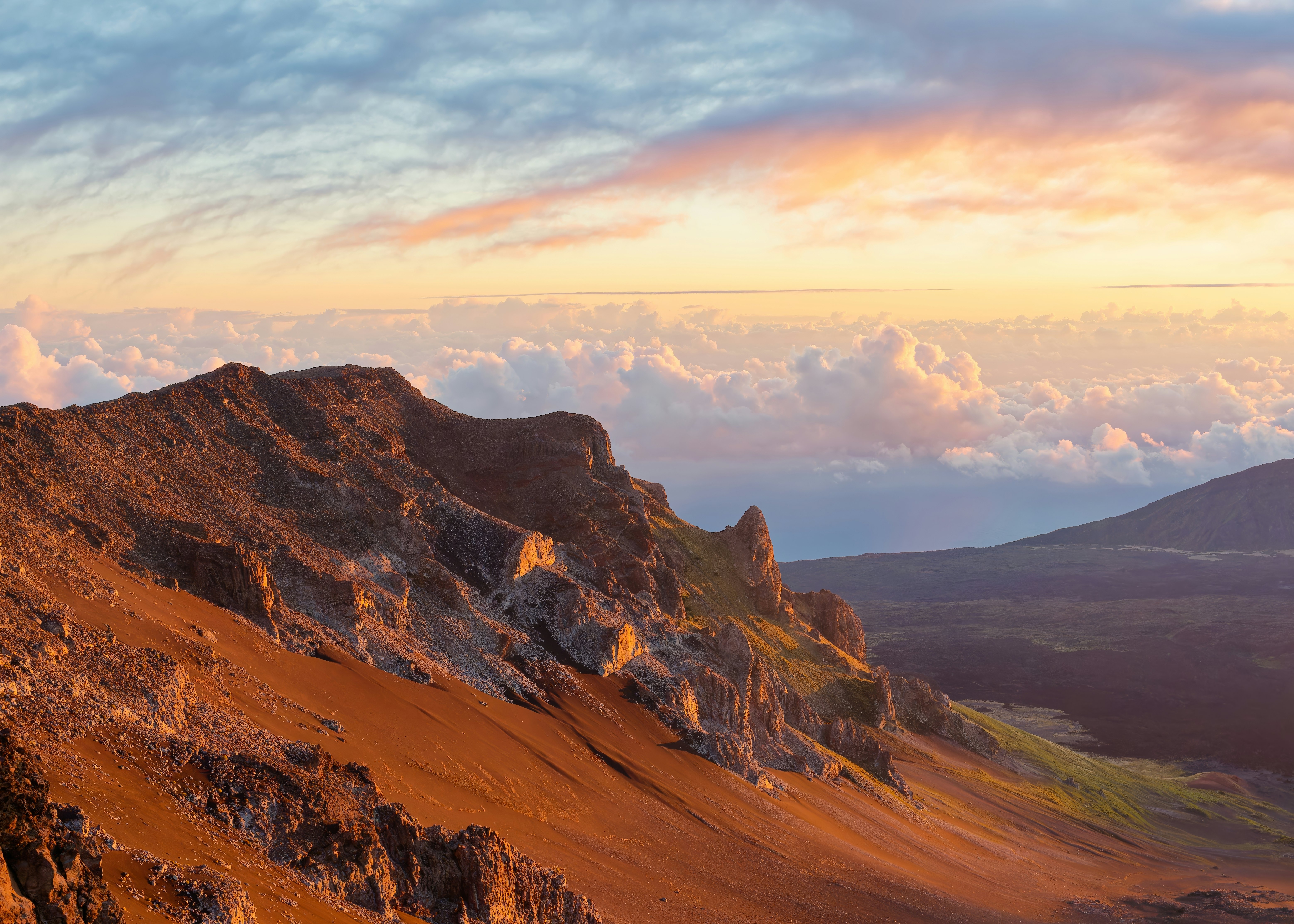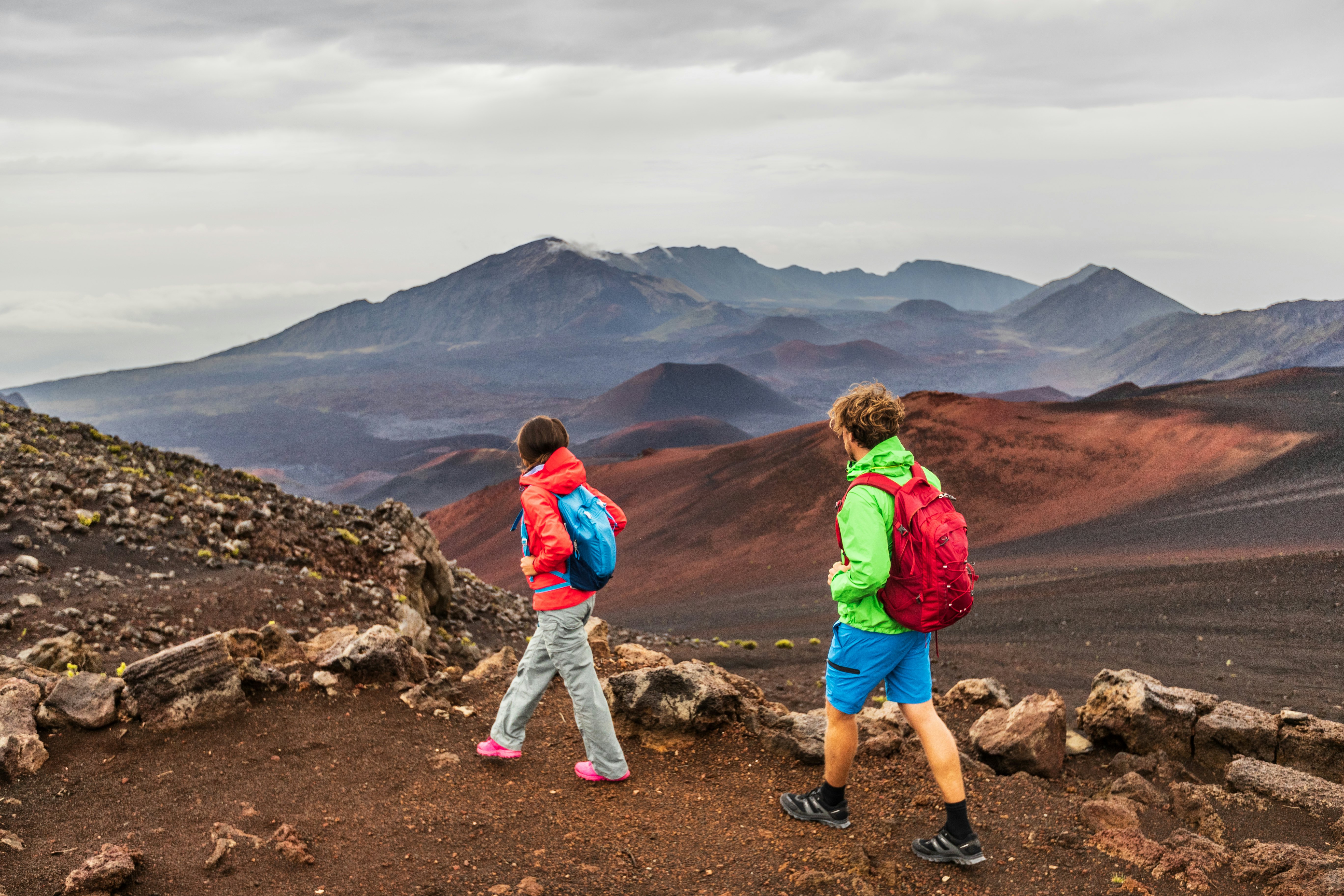
The 30 best countries, cities and regions to visit in 2025

Apr 22, 2025 • 7 min read

Heading to Haleakalā National Park at sunrise is the best time to go. Don Land / Shutterstock
You can’t ignore Haleakalā. Rising 10,023ft and often shrouded in clouds, this dormant volcano dominates the entire eastern horizon of Maui. Capped by a crater that covers more ground than Manhattan, the summit is a visual feast and the centerpiece of Haleakalā National Park. Ancient Hawaiians worshipped near the cinder cones that dot the crater floor, and many Native Hawaiians today retain a spiritual connection to the summit.
Haleakalā means “House of the Sun,” a beautifully accurate name thanks to the vivid colors that illuminate the crater just before dawn.
But the famous sunrise isn’t the only bit of magic in the park. Hiking trails drop down red-cinder slopes, twist through tropical forests and climb to coastal waterfalls. Rare geese waddle past cars and high-altitude plants glisten in the sun. And the stargazing? Sublime.
Make the most of your visit with even a bit of advanced planning; this guide is a great start.

When allocating your time, tough decisions await. The issue is that Haleakalā has two distinct geographic regions – the summit and the coast – and each has its own entrance. These entrances are a half-day’s drive from each other, and the recommended route includes the twisty but spectacular Road to Hana. You cannot drive between the two districts within the park.
For the full sunrise experience, arrive one hour before dawn. Since it can take up to two hours to drive to the summit from West Maui, you may need to leave your hotel at 3am. If you’ve been awake since 3am, staying energized all day won’t be easy. The high altitude will sap your energy, too. Your best bet is a short hike immediately after sunrise. One option is the half-mile descent to the first overlook on the Keonehe‘ehe‘e (Sliding Sands) Trail – this walk is a fine introduction to the moonscape beauty of the crater.
Another option is skipping the sunrise altogether and spending a full day exploring. The park empties out right after dawn, so arriving around 8am will give you some solitude and keep you briefly ahead of most daytrippers. Sunsets atop Haleakalā are impressive too. The park also offers ranger walks and star programs.
Explore the coastal Kipahulu District in East Maui in the morning. Road to Hana daytrippers and tour groups begin clogging the park by mid-afternoon. A morning visit also keeps you ahead of the midday heat.

If you plan to watch the sunrise, spend at least four hours in the park. This time span covers the predawn show, the sunrise itself and a bit of exploring. If you skip the sunrise, plan to spend at least a half day visiting the crater overlooks and various sites. Add a few hours if you want to hike.
Exploring the Kipahulu District, with a hike on the Pipiwai Trail, will also take a half day. If you skip the hike, then one or two hours should suffice.
Admission is US$30 per vehicle and valid for three days. A motorcycle pass is US$15. Pay online or at an entrance station, but no cash is accepted; Credit and debit cards only. For a sunrise visit, you must pay the admission fee and secure a reservation for your vehicle. Only 150 cars are allowed in for the sunrise between 3am and 7am. Sunrise reservations can be made 60 days in advance, and they are only available online. The cost per reservation is US$1. A few reservations may become available two days in advance.
If you follow the Haleakalā Hwy (Hwy 377) from Kula, it’s a twisty 16-mile drive to the Summit District Entrance Station. From there it’s another 10 miles to the summit, which can take 30 minutes to drive. The road is paved but it is steep and winding. From Pāʻia it takes about an hour to reach the summit.
From Hana, it’s a 10-mile drive (30 minutes) to the Kipahulu District. If you’re driving to Kipahulu from Pāʻia via the Road to Hana, it is a 55-mile trip that will take at least two and a half hours.

The Haleakalā Hwy swoops up the volcano’s fertile green slopes, twisting above steep drops that emerge from the mist like death’s sudden door. Guardrails are few and roaming cows are a possibility on this scenic drive, which, for some, can be is a white-knuckle adventure. But ever-expanding views of brilliant blue seas are a fine reward. Pull over to stroll the nature trail in Hosmer Grove, which is home to a dense collection of native and non-native trees prime for birdwatching. Continue climbing to the Leleiwi and Kalahaku overlooks, which peer over the rim of the crater.
Exhibits spotlight the history and culture of the park at the Headquarters Visitor Center (8:30am to 4:30pm) one mile beyond the entrance station. The Haleakalā Visitor Center (sunrise to noon) is 10 miles further up the road.
On a clear day, 360° views from Puʻuʻulaʻula (Red Hill) Overlook, the highest point in Maui, include Hawaii’s other islands and the West Maui Mountains. The adjacent crater is awash in a rich mix of grays, greens, reds and browns. This vast depression, which is 7.5 miles long and 2.5 miles wide, is not a true volcanic crater. A remnant of two river valleys, it was carved by water and landslides over the millennia.
In the summit area you can also delve into the exhibits at the Haleakalā Visitor Center and admire a rare ʻahinahina (silversword plant) and its silver-spiked leaves. The park’s online calendar provides details about evening star programs and the monthly Full Moon Rise program.

If you’re ever going to slip into the multiverse, it will likely happen along the hypnotic Keonehe‘ehe‘e Trail. Volcanic cinders depress and crackle underfoot as you descend into the ancient valley and the haunting quiet of its cinder desert. Seussian ʻahinahina plants and ruddy pu‘u (cinder cones) catch the eye within this stark, otherworldly expanse. The Halemau‘u Trail drops from the Haleakalā Hwy to the Keonehe‘ehe‘e Trail, passing views of lava tubes and pu‘u along the way. Near the summit entrance station, a short trail meanders through the Hosmer Grove Forest.
Due to the high elevation, you will likely feel tired more quickly than you do when hiking at sea level, and altitude sickness is a possibility. Wear sturdy hiking boots and pack more water than usual. Fill water bottles at the visitor centers, but there are no natural or reliable water sources within the crater. Hiking out of the crater takes twice as long as the descent.
Cascades tumble down terraced pools in the spectacular ’Ohe’o Gulch, which empties into the ocean a short walk from the Kipahulu Visitor Center. Adventurous hikers can tackle the Pipiwai Trail. This 4-mile out-and-back climbs past waterfalls, basalt cliffs and a banyan tree and dives into a soaring bamboo forest.
A relative of the sunflower, ʻahinahina (silverswords) were once on the brink of extinction. Marked by elegant, silver-spiked leaves that are luminous with dew in the morning, the plants grow above 6500 ft and live up to 50 years. Look for them beside the Puʻuʻulaʻula parking area.
Also saved from extinction, the nene is Hawaii’s state bird. The only surviving endemic goose in Hawaii, these friendly birds hang out near the Headquarters Visitor Center.

Camping is a wonderful way to immerse in Haleakalā’s beauty. Hosmer Grove Campground is the only drive-in campground in the Summit District. Tucked beside a forest at 6800ft, it’s a pretty spot but can get cloudy. Primitive backcountry camping is also an option. For something unique, reserve one of three hike-in wilderness cabins deep in the crater. Kipahulu Campground sits on oceanfront cliffs near the ruins of an ancient village. Camping reservations are required across the park.
No food or beverages are sold in the park. Pukalani Superette in Pukalani and Mana Foods in Pāʻia are convenient pit stops for snacks and pre-made sandwiches on the way to the summit.
Temperatures on the summit are 20 degrees colder than they are elsewhere on the island and range from below freezing to 65°F. It’s often windy, and it sometimes rains. Dress in layers and bring a waterproof shell. The sun’s UV rays are also stronger on the summit so bring a hat and sunscreen.
All visitor centers and the Hosmer Grove picnic area are wheelchair accessible. A steep ramp provides wheelchair access, with assistance, to the Puʻuʻulaʻula Observation Deck. Accessible restrooms are located at all visitor centers, the Kalahaku Overlook and Hosmer Grove. Park trails are not paved or suitable for wheelchairs.